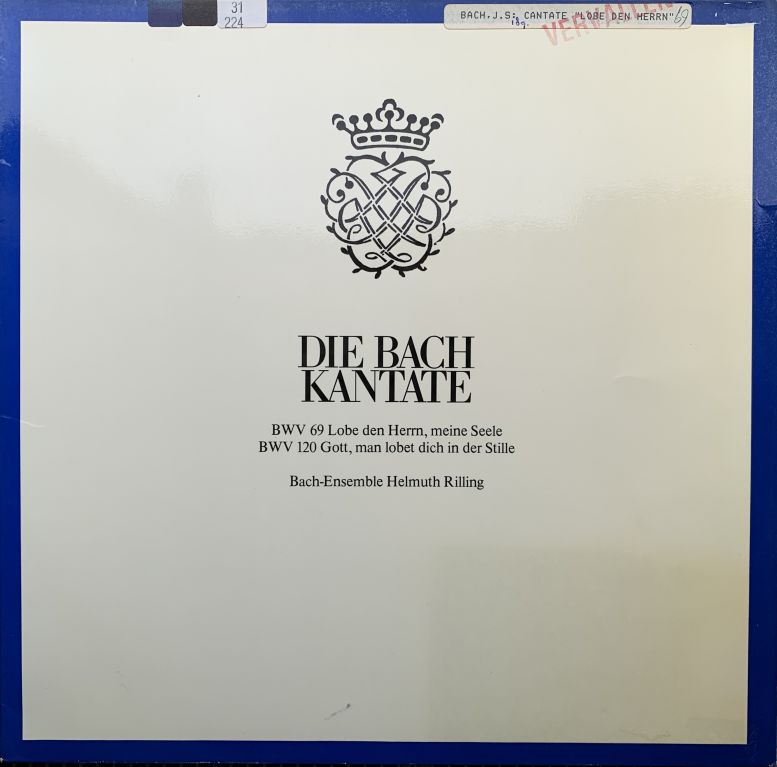https://www.discogs.com/JS-Bach-Helmuth-Rilling-Die-Bach-Kantate-BWV-69-BWV-120/release/10288965
Pity. This record is broken I think. The surface is grey, the sound has a lot of hiss. Did I use a nail to listen to it? I know I had some bad players in the past, but the surface of this record seems completely lost. Time for a short explanation about record damage.
As they say, the music is in the groove. As the record is played, the stylus picks up the music from within the groove itself, with the stereo effect coming from the left or right of that groove. This means there is no so0und coming from outside of that groove. Imagine this as a valley in-between mountains. The valley is where the music is, the mountains are not even touched.
Now that is happening with a good stylus, one that reaches all the way to the bottom of that valley. If the stylus is a bit worse, or has some dust on it, it might not reach the bottom. It still picks up the music, but less so. It also is effected more by damage that was done to the surfaces between the grooves (the mountains).
How every kind of damage effects the sound of the recording depends on the type of vinyl and the state of the stylus that is used. But in general, here goes nothing.
- Specks. Mostly these are little spots that can be felt with your finger. No idea where those are coming from, but when they are there, they present themselves as little white dots on the surface. They can be easily removed, just by a fingernail. You’re only touching the top of the ‘mountains’, so no real damage can be done in doing that.
- Greasy fingers. Stains from touching the record in the wrong way, with dirty hands. Can sometimes be removed by a soft piece of cloth. but if they cannot be, the record has to be cleaned by a good record cleaning machine (RCM in record-nerd-speak). The bad ones can be heard in playback because of a regular soft distortion.
- Scratches. This is the classic, but they are not always heard. The extent of the damage is very dependent on the type of vinyl, and on how deep the scratch goes. If you can see it, it does not always mean you can hear it. If you can hear it, alas, this damage is not repairable. I know there are cleaners out there that promise that, but these create a kind of residue that in the long run will only damage the record more.
- Greyness. A record can be played so many times, it gets grey. Usually because the stylus was damaged, leave little scratches inside the groove. This can come in many ways, both noticeable and not. Sometimes this is repairable by a good RCM, but more often than not this is the end of your record. It just means the groove itself is damaged, and the music is lost. There some record companies that were using vinyl that looks like this after some decades (blue-note for instance) but only sounds better.
- Botched wash job. Please, don’t wash your records with any fluid and then just sun dry it. It leave these nasty stains all over the place. This is a perfect job for a good RCM though, and nine out of ten it gets your record totally repaired. If it doesn’t, try it a second time, but I have had cases where the previous fluid is crusted in the record groove. Some of these dissolved the dust, creating this kind of rock hard groove crust.
Wouldn’t this be nice with pictures and examples of how it sounds?
